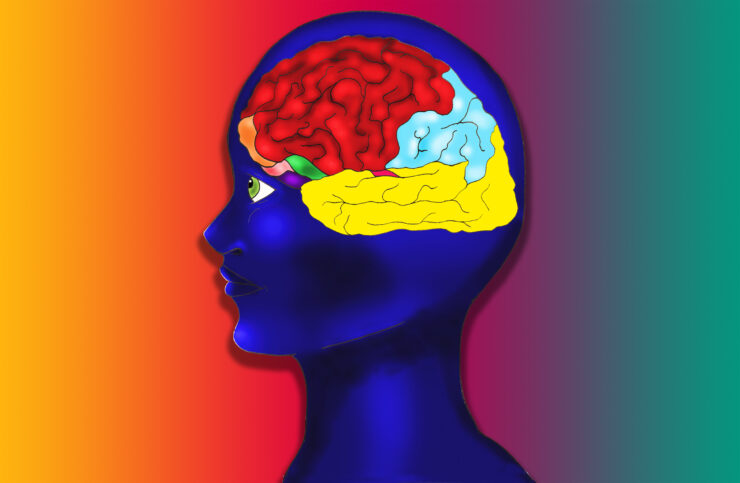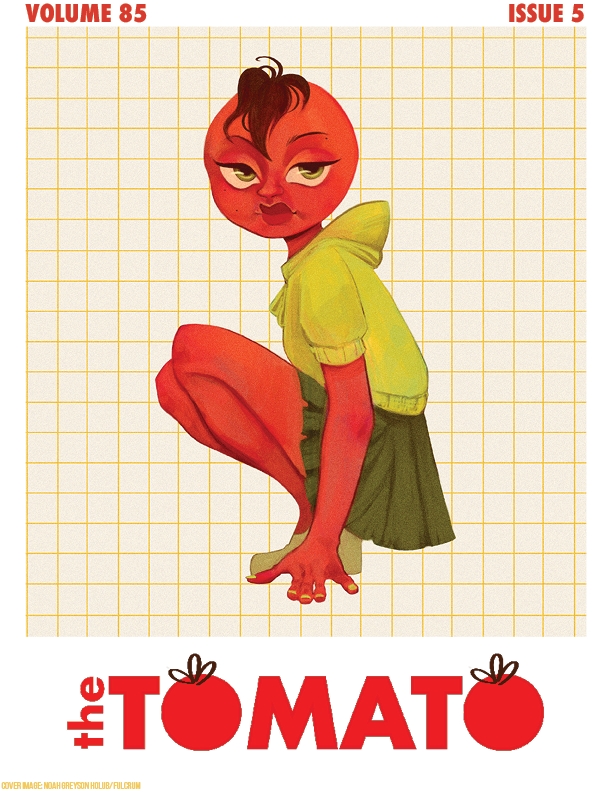The psychological puzzle of art and artists
The most famous example is Vincent van Gogh; the tortured artist, an archetype both mourned and venerated by the society that created it. History is full of them — Mark Rothko, Jean-Michel Basquiat — even Kurt Cobain and Robin Williams fit the description. All of this feeds a cultural understanding that one must suffer in order to create, or at least, in order to create anything worth creating.
But a growing movement in psychology is challenging this assumption — art therapy clinics have sprouted up all over the country, claiming to harness the curative properties of making art to address and relieve a variety of mental health issues, including stress, anxiety, and depression. This course of treatment has become so mainstream that some insurance companies even reimburse art therapy sessions.
These two very different ideas of how art engages with the human mind have come to clash at the center of the art world – and they may not be as mutually exclusive as you might think.
Inside an artist’s mind
“Creativity permeates all walks of life,” says former psychologist and professor emeritus at Ryerson University George Swede. “Creativity is just finding connections among seemingly unrelated things. So you have that in science, you have that in business, you have that in personal relationships, you have that in every area of life. All of us are creative.”
Swede takes issue with any blame that falls on creativity itself for the prevalence in mental health issues among artists.
“Creativity spans a lot of different activities,” he says, “and on most of those activities, there’s no connection with mental illness. As a matter of fact, you don’t find any more people among highly creative people with problems than you do in the general population. But among highly creative artists, it becomes more common.”
A Harvard study published in 2008 found that social rejection and depression were both linked to artistic creativity. In fact, a variety of evidence, both anecdotal and scientific, points to the truth of Swede’s assertion.
Alexandra Urosevic is a local abstract painter, University of Ottawa graduate, and high school teacher at Hillcrest High School in the city. Self-taught, she inherited art from her grandparents, who worked in the advertising industry in the 1960s, and her mother, a self-taught artist herself who also dealt with mental illness.
“[My mother] struggled with terrible anxiety her whole life, and she dealt with being undiagnosed and being depressed,” Urosevic says. “Growing up I would see her work, and she is so talented, and she would make thousands of things before she decided that one was good enough to share with the world.”
It took her mother until her mid-50s to achieve the self-confidence to put on galleries and share her art. Thankfully for Urosevic, she found her way back to art sooner.
Despite a passion for art throughout her youth, she left it behind to pursue a university education. When Urosevic left university, what began as an identity crisis quickly spiralled into a mental health crisis.
“It took a mental breakdown to connect with my paintbrush again,” she says. “For four or five years I was depressed, anorexic, and so anxious that I couldn’t leave my house except to go to class. It was very crippling and debilitating.”
“My family told me I needed to go get help, and then through therapy, they suggested trying to express myself artistically. And one canvas led to another and its been like that since 2016, I haven’t stopped.”
Once she began painting again, Urosevic describes the relief as being tangible — like a weight being lifted off of her chest.
“I try not to do it as a therapeutic process,” she says. “I just do it because something inside me is telling me I have to get this out or I’m going to be miserable if I don’t.”
She admits she shares the fear common to artists who struggle with their psyche — that continuing therapy might negatively impact the quality of her art.
“I was seeing how I was mentally getting better and I was happier, but I began to wonder how it was going to change my artistic output. Because everyone was telling me ‘what you’re doing is amazing,’ and it was all coming from the saddest, most painful places,” she says.
“I thought, ‘if I leave that place, is my art still going to be any good? How do I balance keeping that part of me present without it sabotaging me and bringing me back into a place where I’m not healthy?’ And I’m still struggling with that. It’s a hard balance.”

She describes her commission process, during which she asks a prospective client what three emotions they want to feel every time they look at the painting.
“I think being strongly empathetic of other people and being able to put myself in other people’s shoes, I think that helps with creating. I don’t know how people would be able to do it if they couldn’t literally feel how other people want to feel. But it’s exhausting.”
Swede thinks this type of heightened empathy and unique means of emotional interaction may be part of the reason why so many artists struggle with their mental health.
“I think what happens is when people are manic depressives, let’s say, or have some other issues, such as borderline schizophrenia — when you’re dealing with mental pressures like this, you often think in unusual ways.”
“You can’t help yourself, relating one thing to another, and sometimes you decide to be productive; paint a crazy painting, or focus on something unusual in a poem, connecting things that are not usually connected,” he says. “All of a sudden, you have something that is beneficial or interesting to others, but it’s the product of a mind that is wandering all over the place — sometimes confused, or troubled, but manages to come up with something unusual and interesting.”
James Miller, an associate professor and chair in Carleton University’s history department, studies art brut, or “outsider art,” and he has a particular interest in psychiatric art. Many of the artists he studies are unknown or anonymous, but created intense and interesting works of art while institutionalized, either via therapy programs or as an independent creative exercise.
“I teach a class, Madness in Modern Times, and we address that question of madness and genius and whether there’s a madness in creativity, whether there’s a connection. From my point of view, I think one of the connections is that people with mental illnesses feel they’re unable to communicate with others,” he says. “So I think for quite a lot of people, art becomes a way to express themselves when conventional methods fail them.”
Swede’s theory essentially boils down to an assertion that the troubled mind is capable of drawing connections that an untroubled mind is unlikely to do — for example, articulate emotion through shape and colour.
This may explain how an artist is able to paint what they feel, and it may explain the link between mental illness and visual artistry, but what it doesn’t explain is why artists pick up a paintbrush, to begin with. Urosevic can shed some light on that.
“Everyone wants to connect to other people,” she adds. “And as a naturally introverted person, having art as a way to connect with people, that’s been a lifeline.”
To Swede, this is just another example of how different types of creativity manifest themselves in instances of emotional crisis.
“If you’re depressed, one way to deal with it is to talk about it, or you could write a poem, or you could go jogging, or go garden. There are numerous ways you could do this, and presumably, someone who is an artist would seek to express this in a painting,” he says.
“It’s always good to have something concrete to hold on to on the outside of yourself, rather than letting it percolate inside. That stabilizes us.”
Bringing what’s inside out
For an artist, to paint, draw, or sculpt — to create — is to communicate. Even for the rest of us, there may be similarly cathartic qualities to making art.
According to the All-Party Parliamentary Group on Arts, Health, and Wellbeing report from July 2017, art therapies are proven to assist not only with common mental illnesses such as anxiety and depression, but also in recovery from brain injury, and relieving the physical and emotional side effects of cancer and its treatment.
“There are two general types of creativity — the kind we usually hear about, the glamorous stuff, somebody does something for the first time in human history,” says Swede. “And then you have the general kind of creativity that we experience personally where we do new things that are new to our life but have been experienced by others before. But for us, its a genuine, wonderful, enlightening, terrific feeling.”
Urosevic tries to teach her students that you don’t have to be the glamorous type of creative in order to benefit from the process of creating.
“Without telling the students that it’s therapeutic, I just want them to let go of this idea that you need to draw realistically, that everything you do needs to be perfect. There’s so much anxiety in kids when they come into art where they think, ‘If I can’t draw a portrait perfectly, then I suck.’ I think it’s tough to break down that fear and say we can all be artists, we can all create things that are meaningful and we all have a voice that belongs in the art sphere,” she says.
Urosevic testifies that students and teachers alike report feeling more relaxed after one of these sessions, regardless of whether or not she had described it as a therapeutic exercise.
Miller adds that although he wouldn’t consider himself an artist, he has experimented with painting in the past and can easily understand how it could provide some relief.
“There’s something quite nice about creating something that’s yours, even if it’s not that great, even in just a play environment, even if it’s just for yourself,” he says.
Urosevic says she thinks art provides an avenue for confronting parts of the psyche that may otherwise be left unexamined, and she sees tremendous courage in that.
“Artists are so powerful, and we have so much strength to be able to say, ‘Let me highlight this. This is a normal thing,’ and help destigmatize the pain behind creating.”
According to Miller, the emotional vulnerability that can be so challenging about making art can also be incredibly freeing.
“There could be lots of depressed plumbers or lawyers, but their line of work doesn’t lead them to express those feelings externally. Artists — even the ones who are expressing happiness — are doing it through their art. I think artists have more ‘permission’ to be out there about themselves.”
Miller says he thinks art helps to normalize discourse on serious mental illness and elicit empathy from audiences who may otherwise be difficult to access.
“You can go, ‘I don’t really know that person’s experience but I can begin to think about what that may be like,’ and art can help to make that connection.”
Besides the obvious psychological benefits of creating art to relieve mental illness, it seems that art based in suffering is typically well-received emotionally by audiences as well.
“They certainly resonate more with me,” says Miller. “There is something about a sad piece of art rather than a happy one that just goes deeper. I think it’s because people who aren’t seriously depressed might still be people who have had a deep sadness in their life, they’re grieving — there’s a point of resonance there.”
“It’s about the artist feeling the extremes of emotion, and even someone who doesn’t feel those things all the time, they feel them every now and then. It’s far from being the same thing, but it’s a point of contact. When it comes to human emotions, we’re all on a continuum.”
Swede has a simple answer for questions about why sad art resonates more strongly with viewers than its happier counterparts.
“Life is sad. When you actually start looking at it, we are born and then we die, and we all know we’re going to die. And life is not fair. My guess is that the painful and sad things in life are always in the background of our thinking, and when we see a work of art — a sculpture, movie, novel — it brings these up to the surface.”
Ellen Winner, a senior researcher at Harvard University’s Project Zero, wrote a book on the interaction of the brain with art titled “How Art Works: A Psychological Exploration.”
In it, she writes that the findings of a study she conducted reveal that the feeling of being moved is actually a pleasurable experience, and thus, even if an audience is saddened by a piece of art, their overall reaction to it is positive.
Urosevic has seen this in the reception of her own art, and has felt it when receiving art herself.
“I don’t think you can be a successful artist and not be emotionally in touch with the good and bad parts of you,” she says. “When you’re honest and open as an artist, that’s when you connect to people the most. The second artists are open about terrible things that they’re experiencing, that’s when people are connecting. Everyone is just looking for themselves. People are looking to feel like their emotions are validated.”
Miller agrees with Urosevic’s assessment of an artist’s need for emotional awareness.
“I think one thing that is the case is that people who are artists, people who dedicate their lives to expressing feelings through painting, or poetry, or music, they’re maybe just more inclined to go there — to go to these darker places that everyone experiences, to some extent,” he says. “In their line of work, they’re more likely to encounter and express these kinds of feelings.”
An artist’s impact
Miller tells me about a carving by an unknown man, titled Recovery — a self-portrait carved in a dead apple tree by a psychiatric patient who had previously shown no interest in art therapy. This was a piece that struck a chord in Miller. Two years after carving Recovery, the patient died by suicide.

For myself, it’s Michelangelo’s David. For Alexandra Urosevic, it’s the massive Jean-Paul Rioppelle installation in the National Gallery of Canada here in Ottawa.
The experience is timeless. Being in the presence of a great piece of art — the feeling of being not only moved, but understood, in the strokes of a brush or blow of a chisel — it is a language spoken silently, from one soul to another.
The implications of expression in such a universal manner are not difficult to understand — its a lifeline for those who struggle to communicate their emotions in a conventional fashion. Miller cites several sketches that were scratched out on toilet paper by psychiatric patients who were denied access to art. Urosevic can empathize — to her, making art is about finding a way to express the truest version of one’s self.
“There’s something inside of you that forces you to create, because if you don’t, then you are the least authentic version of yourself. You’re lying. You feel like you’re lying if you don’t paint and create. [My art] is a piece of myself! It’s pieces of our souls.”





